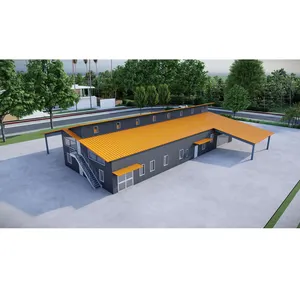Phổ biến trong ngành của bạn






Nhà Kho Kết Cấu Thép Tiền Chế Tòa Nhà Kim Loại Chi Phí Thấp
19,00 US$ - 30,00 US$
Đơn hàng tối thiểu: 1000 Mét vuông







Bền Và Chi Phí Thấp Prefab Xây Dựng Kết Cấu Thép Kho Để Bán
19,00 US$ - 30,00 US$
Đơn hàng tối thiểu: 200 Mét vuông







Hà Bắc trico khung thép ván khuôn symons bê tông hình thức symons thép-ply hình thành cho bê tông xây dựng
25,90 US$ - 69,90 US$
Đơn hàng tối thiểu: 200 Cái







Acro Giàn Giáo Thiết Kế Điều Chỉnh Thép Prop Acrow Prop Vật Liệu Xây Dựng Ván Khuôn Thép Đạo Cụ Puntals Cho Peru
9,50 US$ - 10,00 US$
Đơn hàng tối thiểu: 500 Cái







Sanye tùy chỉnh sơn tĩnh điện đi bộ giàn giáo xây dựng trang web thép nặng mạ kẽm hình chữ H
11,98 US$ - 16,98 US$
Đơn hàng tối thiểu: 200 Bộ
Vận chuyển mỗi chiếc: 618,21 US$







Nhà Máy Giá Xây Dựng ván khuôn sợi thép cột ván khuôn bê tông Khung ván khuôn để bán
45,00 US$ - 65,00 US$
Đơn hàng tối thiểu: 100 Cái
Vận chuyển mỗi chiếc: 999,90 US$






Bán Cột Trụ Kiểu La Mã Bằng Đá Trang Trí Nhà Cửa Kích Thước Tùy Chỉnh
550,00 US$
Đơn hàng tối thiểu: 2 Cái






Trụ Đá Cẩm Thạch Tròn Thiết Kế Cổ Điển Vật Liệu Xây Dựng Đá Cẩm Thạch Rắn Tự Nhiên Trụ Cột La Mã Bán
350,00 US$ - 1.980,00 US$
Đơn hàng tối thiểu: 2 Cái






Hình Trụ Tròn Bằng Đá Cẩm Thạch Màu Be Khắc Đá Thiết Kế Đơn Giản Cho Biệt Thự Tòa Nhà Văn Phòng Chính Phủ
1.280,00 US$ - 3.980,00 US$
Đơn hàng tối thiểu: 1 Cái






Bán Cột Đá Cẩm Thạch Cổ Điển Xây Dựng Tay Nghề Cao
800,00 US$ - 3.800,00 US$
Đơn hàng tối thiểu: 2 Cái






Độ Ổn Định Tốt Cột Bê Tông Hình Thức Xây Dựng Tường Nhôm Ván Khuôn Để Bán
120,00 US$ - 150,00 US$
Đơn hàng tối thiểu: 200 Mét vuông






QUYANG Đá Cẩm Thạch Carrara Trắng Đá Hoa Cương Tròn Trang Trí Ngoài Trời Cột Đá Hy Lạp La Mã Để Bán
350,00 US$ - 1.800,00 US$
Đơn hàng tối thiểu: 2 Cái






Trung Quốc tự nhiên tùy chỉnh ngoài trời trang trí vật liệu xây dựng Roman đá cẩm thạch cột để bán
720,00 US$ - 800,00 US$
Đơn hàng tối thiểu: 2 Bộ
Vận chuyển mỗi chiếc: 32,50 US$






LC13025W Vật Liệu Xây Dựng Mạnh Mẽ PU Roman Cột Rỗng Trụ Cột cho Bán
80,00 US$ - 200,00 US$
Đơn hàng tối thiểu: 20 Cái






Tấm Ván Sàn Thép Tấm Ván Tường Tấm Ván Khuôn Xây Dựng Bê Tông Ván Khuôn Để Bán
250,00 US$ - 300,00 US$
Đơn hàng tối thiểu: 2 Cái
Vận chuyển mỗi chiếc: 82,35 US$






Khuôn Cột La Mã Cho Biệt Thự Lan Can Châu Âu Hàng Rào Lan Can Ban Công Cột Bình Lan Can Đúc Khuôn Xây Dựng Xi Măng Tại Chỗ Để Bán
10,50 US$ - 11,00 US$
Đơn hàng tối thiểu: 5 Tấn






Tùy chỉnh xây dựng trang trí thiên nhiên đá cẩm thạch cột Roman cột để bán
500,00 US$ - 700,00 US$
Đơn hàng tối thiểu: 2 Bộ






Bán Sỉ Trụ Cột La Mã Tròn Vật Liệu Xây Dựng Ngoài Trời Cột Đá Cẩm Thạch Trang Trí Giá Để Bán
1.936,00 US$ - 2.169,00 US$
Đơn hàng tối thiểu: 10 Cái






Biệt thự văn phòng chính phủ xây dựng lớn thiết kế đơn giản đá khắc đá cẩm thạch màu be cột tròn để bán
1.080,00 US$ - 3.800,00 US$
Đơn hàng tối thiểu: 2 Bộ






Blve lớn ngoài trời vật liệu xây dựng đá tự nhiên cột màu be đá cẩm thạch Roman cột để bán
350,00 US$ - 2.000,00 US$
Đơn hàng tối thiểu: 2 Cái






Hot Bán 18Mm PVC Hỗ Trợ Cảm ứng-Tấm Nhựa Cho Xây Dựng Xây Dựng Cột Ván khuôn
8,90 US$ - 39,90 US$
Đơn hàng tối thiểu: 50 Mẫu Anh












Hình Trụ Tròn Bằng Đá Cẩm Thạch Trắng Thiết Kế Đơn Giản Cho Biệt Thự Tòa Nhà Văn Phòng Chính Phủ
500,00 US$ - 6.500,00 US$
Đơn hàng tối thiểu: 1 Cái






RF Khuôn Cột La Mã Trong Nhà Phong Cách Mới Khuôn Vật Liệu Xây Dựng Trong Nhà Sợi Thủy Tinh Chất Lượng Cao Để Bán
51,00 US$ - 55,00 US$
Đơn hàng tối thiểu: 1 Cái
Vận chuyển mỗi chiếc: 109,32 US$






Xây dựng trang trí giá rẻ nhất Roman trụ cột bê tông xi măng cột khuôn nhựa để bán
120,00 US$ - 130,00 US$
Đơn hàng tối thiểu: 1 Bộ






Sử Dụng Rộng Rãi Thép Có Thể Điều Chỉnh Xây Dựng Hỗ Trợ Cột Kẹp Để Bán
Sẵn sàng vận chuyển
8,00 US$ - 10,00 US$
Đơn hàng tối thiểu: 10 Bộ
Vận chuyển mỗi chiếc: 7,56 US$






Bán Cột Tròn Đá Cẩm Thạch Màu Be Thiết Kế Đơn Giản Lớn Cho Tòa Nhà Văn Phòng Biệt Thự
100,00 US$ - 500,00 US$
Đơn hàng tối thiểu: 1 Cái






Trung Quốc tự nhiên tùy chỉnh ngoài trời trang trí vật liệu xây dựng Roman đá cẩm thạch cột để bán
720,00 US$ - 800,00 US$
Đơn hàng tối thiểu: 2 Cái






Chứng Khoán Sẵn Sàng Nhà Máy Xây Dựng Xây Dựng Khuôn Ngoài Trời Trong Nhà La Mã Cột Cột Khuôn Mẫu Cho Bán
93,00 US$ - 185,00 US$
Đơn hàng tối thiểu: 1 Bộ






Rotomolding sản phẩm Khuôn OEM tùy chỉnh nhựa xây dựng Roman cột khuôn làm sạch quay khuôn mẫu để bán
300,00 US$
Đơn hàng tối thiểu: 1 Cái






Trang Trí Ngoài Trời Kiến Trúc Phương Tây Vật Liệu Xây Dựng La Mã Trụ Cột Tay Khắc Trung Quốc Bằng Đá Cẩm Thạch Trắng Cột Vốn Cho Bán
1.500,00 US$ - 5.000,00 US$
Đơn hàng tối thiểu: 2 Cái






Nhà máy bán hàng cao sức mạnh chống thấm nước trang trí bằng đá sa thạch cột roman cho xây dựng
100,00 US$ - 250,00 US$
Đơn hàng tối thiểu: 100 Cái






20cm-50cm đường kính ABS nhựa bê tông Roman cột khuôn trụ cột mouldings cột xi măng khuôn mẫu và Roman trụ cột để bán
89,00 US$ - 238,00 US$
Đơn hàng tối thiểu: 1 Bộ






Banruo Bán Hot Hy Lạp Trang Trí Nhựa PU Roman Trụ Cột Cột Cho Trang Trí Đám Cưới
115,00 US$ - 125,00 US$
Đơn hàng tối thiểu: 10 Cái






Kim Loại Vật Liệu Xây Dựng Thép Ván Khuôn Cho Xây Dựng Bê Tông Trụ Cột Khuôn Bê Tông Khuôn Mẫu Để Bán
15,00 US$ - 35,00 US$
Đơn hàng tối thiểu: 500 Cái






Đường Kính 30Cm Cột Bê Tông Khuôn Và La Mã Trụ Để Bán
160,00 US$ - 175,00 US$
Đơn hàng tối thiểu: 10 Cái










TECON Khuôn Bê Tông Tường Cột Ván Khuôn Khung Thép Điều Chỉnh Được Các Kích Cỡ Hỗ Trợ Kỹ Thuật Để Bán
100,00 US$ - 150,00 US$
Đơn hàng tối thiểu: 2 Mét vuông






MF-2705 Thiên Tân Shisheng Thép Phẳng Bê Tông Tường Ván Khuôn Bê Tông Hình Thành Để Bán
41,00 US$ - 45,00 US$
Đơn hàng tối thiểu: 200 Mét vuông






Các danh mục hàng đầu
Giới thiệu về xây dựng cột để bán
Alibaba.com cung cấp các sản phẩm 8635 xây dựng cột để bán. Có rất nhiều xây dựng cột để bán lựa chọn dành cho bạn, chẳng hạn như nhựa, thép, và pp. Bạn cũng có thể chọn từ tại chỗ cài đặt, tại chỗ đào tạo, và tại chỗ kiểm tra xây dựng cột để bán. Cũng như từ văn phòng, xây dựng bê tông, và căn hộ xây dựng cột để bán.Và bất kể xây dựng cột để bán là thiết kế đồ họa, 3d mô hình thiết kế.





















